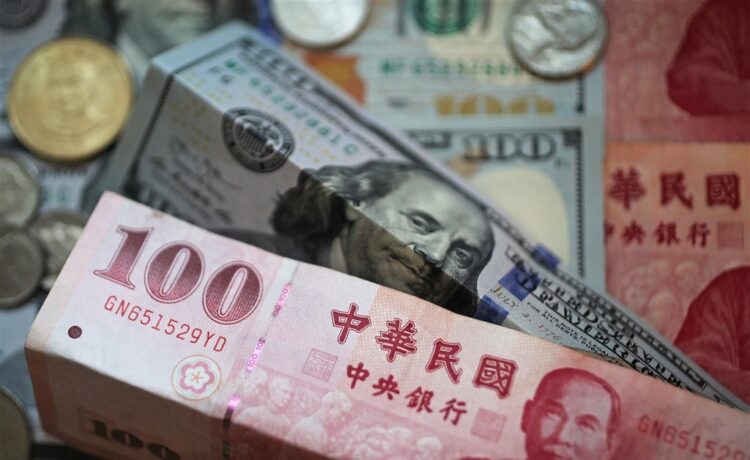Taipei, Dec. 30 (CNA) The U.S. dollar hit its highest year-end closing level against the Taiwan dollar in seven years in 2023 but lost most of its early gains amid hopes of the Federal Reserve starting to cut interest rates next year.
On Friday, the last trading session of 2023, the U.S. dollar rose NT$0.017 to close at NT$30.735 against the Taiwan dollar. The 2023 year-end closing level was the highest since 2016, when the greenback ended on Dec. 30, the last trading session of that year, at NT$32.279.
The U.S. dollar closed at NT$30.708 at the end of 2022, NT$27.690 at the end of 2021, NT$28.508 at the end of 2020, NT$30.106 at the end of 2019, NT$30.733 at the end of 2018, and NT$29.848 at the end of 2017.
The U.S. dollar closed NT$0.027 up — 0.09 percent — compared to the end of 2022, but came off the NT$32.484 high seen on Nov. 1, when selling in the Japanese yen spread to other regional currencies including the Taiwan dollar as the Bank of Japan continued to ease its monetary policy.
However, the U.S. dollar had then come under pressure as the Fed stopped increasing interest rates, which stirred up speculation that the American central bank’s rate-hike cycle could be over.
In December, the U.S. currency was subject to more selling after the Fed left interest rates the same in the Dec. 12-13 policymaking meeting, the last of the year, marking the third consecutive meeting of no change in its monetary policy.
Meanwhile, in the “dot plot,” the Fed’s closely watched grid of individual members’ expectations, the Fed implied after the latest policy-making meeting that it would cut interest rates at least three times next year by a total of 75 basis points.
Chen Yu-chung (陳有忠), the Taishin International Commercial Bank chief foreign exchange strategist, said hopes of the Fed’s rate hike cycle ending had led to investors starting to take more risks in November.
Chen said foreign institutional investors had rushed to pick up local stocks — buying a net NT$240 billion (US$7.81 billion) worth of local shares — and at the same time sold U.S. dollar assets.
In addition to the continued net buying in the local stock market by foreign institutional investors, Chen said local exporters had sold U.S. dollars in exchange for the Taiwan dollar which had further pushed the greenback down in late December.
In November alone, the U.S. dollar shed NT$1.159 or 3.71 percent against the Taiwan dollar, ending a seven-month rising streak. In December, the greenback shed an additional 1.71 percent against the Taiwan dollar, marking another month of weakness, after the currency dipped below the NT$31 mark in the last few trading sessions of the month.
In 2023, the U.S. dollar’s performance against major Asian currencies was mixed. The greenback soared 6.57 percent against the yen, rose 2.73 percent against the South Korean won, and gained 1.98 percent against the Chinese yuan while falling 0.89 percent against the Thai baht, and 1.84 percent against the Singapore dollar.
The U.S. dollar is expected to continue its downtrend against the Taiwan dollar in January, as local exporters tend to sell more greenback holdings to meet further fund demand ahead of the upcoming Lunar New Year holiday starts on Feb. 8.





